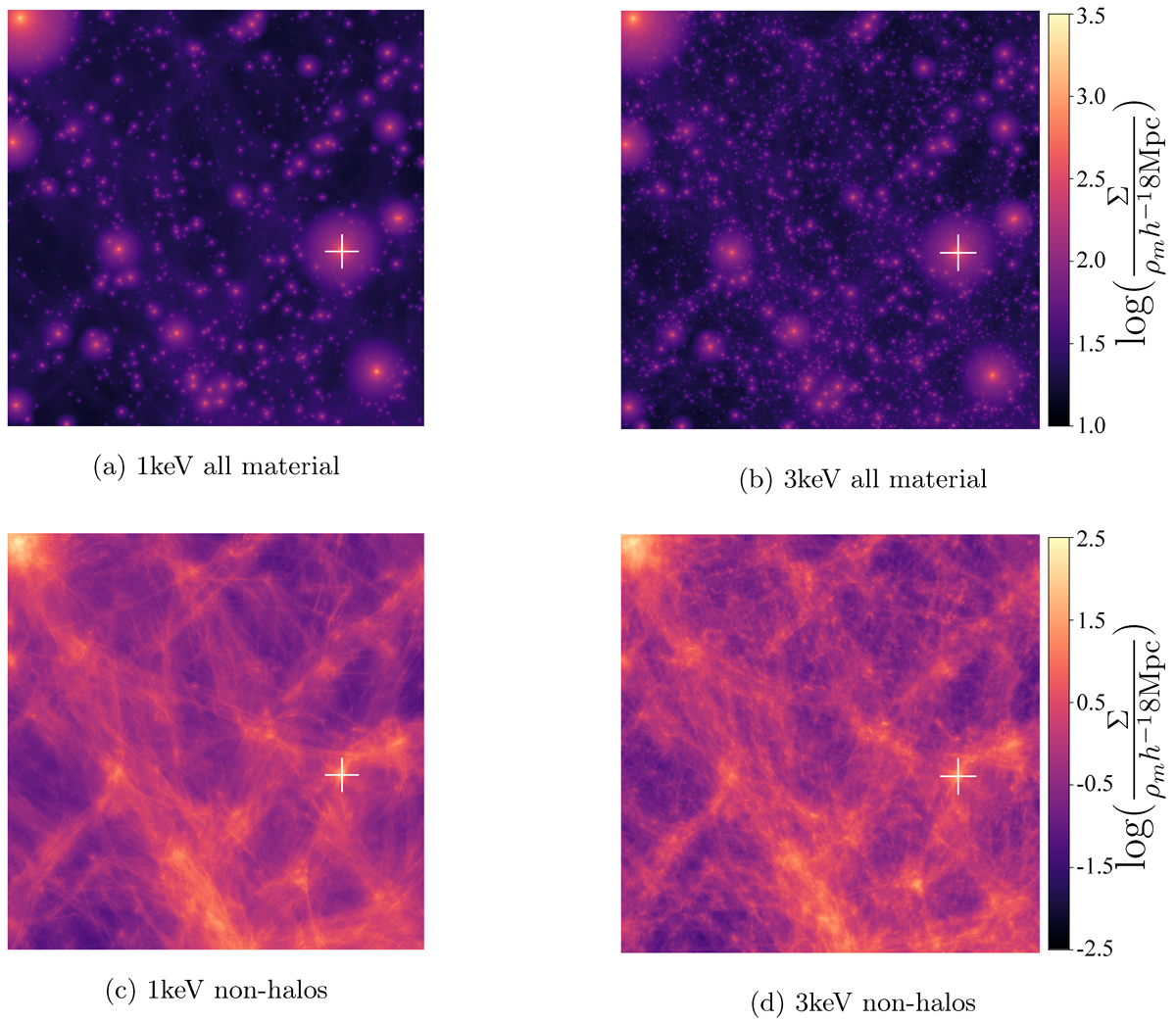Fig. 2.

Download original image
Upper panel: Full projected data from both simulations from R22. Each square has a side length of 8h−1Mpc, and corresponds to a 80h−1 Mpc projection depth. Panel (b) contains fewer small-scale dark matter halos than panel (a) as the free-streaming length is longer in 1 keV than in 3 keV WDM. Lower panel: Non-Halo projected data from both simulations from R22. Each square has a side length of 8h−1Mpc1, and corresponds to a 80h−1Mpc1 projection. Panel (c) contains smoother and less clumpy structures at small scales than panel (d). The markers are all at the same coordinates and show the regions from which we select the non-halo material used as additional perturbations in our gravitationally lensed systems. These correspond to the highest density of non-halo material in both simulations and to the densest halo in both simulations, excluding those which are cut in the top-left corner.
Current usage metrics show cumulative count of Article Views (full-text article views including HTML views, PDF and ePub downloads, according to the available data) and Abstracts Views on Vision4Press platform.
Data correspond to usage on the plateform after 2015. The current usage metrics is available 48-96 hours after online publication and is updated daily on week days.
Initial download of the metrics may take a while.


